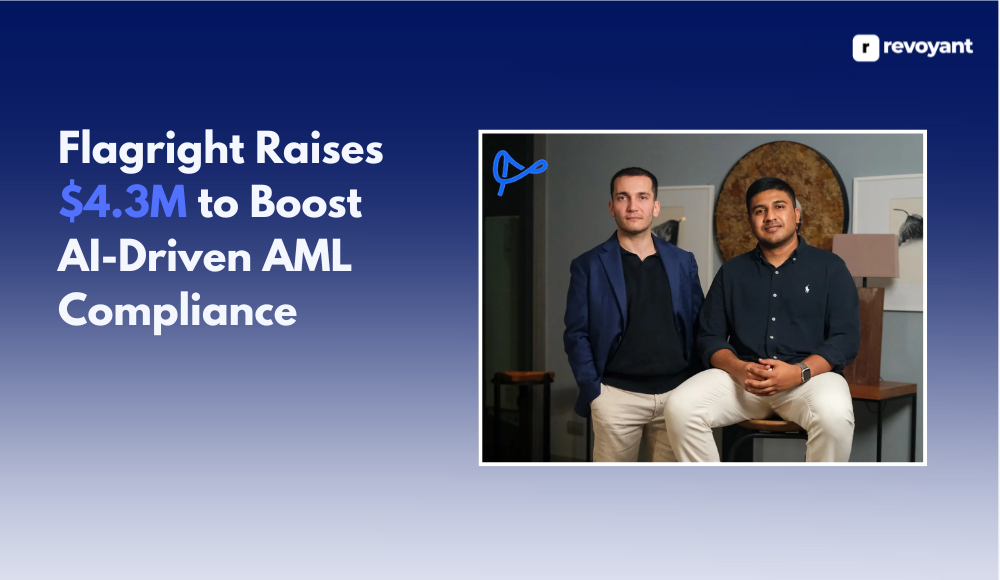Struggling to grasp how Generative AI works and what it does? You’re not alone! Unlike traditional AI, which mainly focuses on analyzing and predicting based on existing data, Generative AI takes things a step further—it creates entirely new content. Whether it’s generating text, images, or even music, this cutting-edge technology is changing how industries operate.
This article will explain what Generative AI is, how it functions, and its benefits and challenges.
Ready to explore? Let’s unravel the mystery of Generative AI together!
Key Takeaways
- AI generates new content, such as text, images, music, or videos, based on patterns it has learned from existing data.
- Using machine learning models such as neural networks and transformers, AI crunches through large data sets to create original and coherent content.
- Unlike traditional AI which predicts or classifies data, AI generates new data, making it more creative and versatile.
- Generative AI is used in a variety of areas, including text generation, image generation, audio/video synthesis, and natural language processing (NLP), enhancing creativity and automating content production.
- Ethical concerns, data bias, and privacy issues pose challenges to generative AI, highlighting the importance of responsible development and deployment.
What is Generative AI?
Generative AI refers to a type of artificial intelligence designed to create new, original content based on the data it has been trained on. Unlike traditional AI models that primarily classify or analyze data, generative AI produces new data such as text, images, music, code, and even video.
Definition and Basic Concepts
Generative AI is a type of artificial intelligence that creates new content. It can produce text, images, audio, and synthetic data. Large language models (LLMs) like GPT-3 predict the next word in a sentence to generate text.
Self-supervised learning helps these models learn patterns from large datasets.
Google uses generative AI to improve user experiences. The outputs include essays, recipes, and creative imagery. Training costs for these models are estimated in the millions.
AI will shape our future by creating endless possibilities.
Comparison with Other Forms of AI
Generative AI differs significantly from other AI forms. Below is a comparison highlighting key distinctions.
| Aspect | Generative AI | Other AI Forms |
|---|---|---|
| Definition | Creates new, realistic artifacts based on training data. | Analyzes data to make predictions or classifications. |
| Data Output | Produces new data, e.g., text, images, video, code. | Predicts outcomes based on input data. |
| Core Technology | Uses neural networks and transformers. | Employs a variety of models like decision trees, SVMs. |
| Popular Models | OpenAI’s ChatGPT, DALL·E 2 | Google’s BERT, IBM’s Watson |
| Applications | Text generation, image creation, audio/video synthesis. | Spam detection, facial recognition, recommendation systems. |
| Adoption Prediction | Significant enterprise adoption by 2026 (Gartner). | Already widely adopted across industries. |
How Generative AI Works
Generative AI uses machine learning models to create new data. Neural networks, including transformers, help it understand and replicate patterns.
Overview of Machine Learning Models
Machine learning models help computers learn from data. These models use algorithms to find patterns in big datasets. For example, large language models (LLMs) understand grammar, vocabulary, and style to generate text.
Neural networks are key in these models. They mimic the human brain by using layers of nodes or “neurons.” Transformers improve language tasks by focusing on different parts of a sentence at once.
This makes text generation smoother and more context-aware.
Role of Neural Networks and Transformers
Machine learning models use neural networks and transformers to generate new data. Neural networks include algorithms designed to recognize patterns and interpret data. They learn from vast datasets to create meaningful outputs.
Transformers like GPT-3, which was trained on 45 terabytes of text data, excel at language modeling and text generation. These models are essential for creating advanced applications in generative AI.
Training costs for models like GPT-3 can reach millions of dollars due to their complexity and computational needs.
Key Applications of Generative AI
Generative AI has many uses. It can create text, images, audio, and videos with minimal human input.
Text Generation
Text Generation uses generative AI to create new text based on patterns learned from training data. Large Language Models (LLMs) take input and produce coherent sentences. These models can generate essays, recipes, and creative content by understanding context.
Foundation Models (FMs) are pre-trained on large datasets, allowing them to be versatile in producing text. Applications include generating natural language responses in chatbots, writing marketing copy, crafting code snippets, or creating unique stories.
Image Creation
Generative AI like DALL-E can produce new images using large datasets. For example, DALL-E 2 has created unusual visual outputs such as a turkey garnished with limes. This technology uses text prompts to generate diverse and novel imagery.
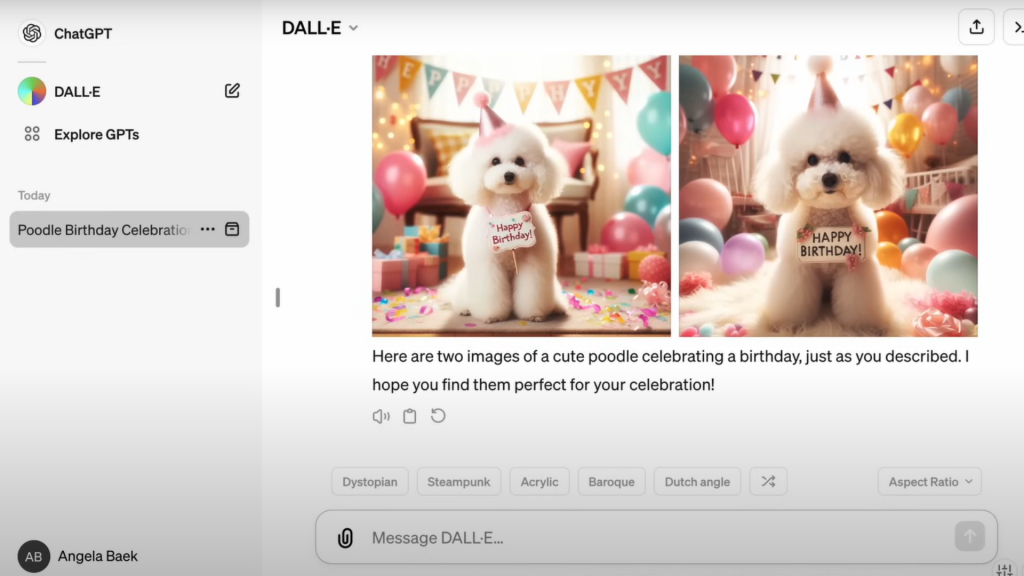
(Image Source: Chat GPT)
The process involves machine learning models analyzing the data and understanding patterns to create unique pictures. These generated images offer creative solutions for marketing, entertainment, and other fields needing custom images quickly.
Audio and Video Synthesis
Generative AI audio models create new sounds from existing data using machine learning. They help in sound generation, music composition, and speech synthesis. For instance, musicians use these tools to generate unique melodies.
Speech generators can mimic human voices for virtual assistants.
In video production, generative AI enables content creation and enhancement. It helps make deepfakes or improve video quality with ease. However, ethical concerns arise about authenticity verification and misuse of technology for fake videos.
Ensuring the credibility of generated media remains crucial.
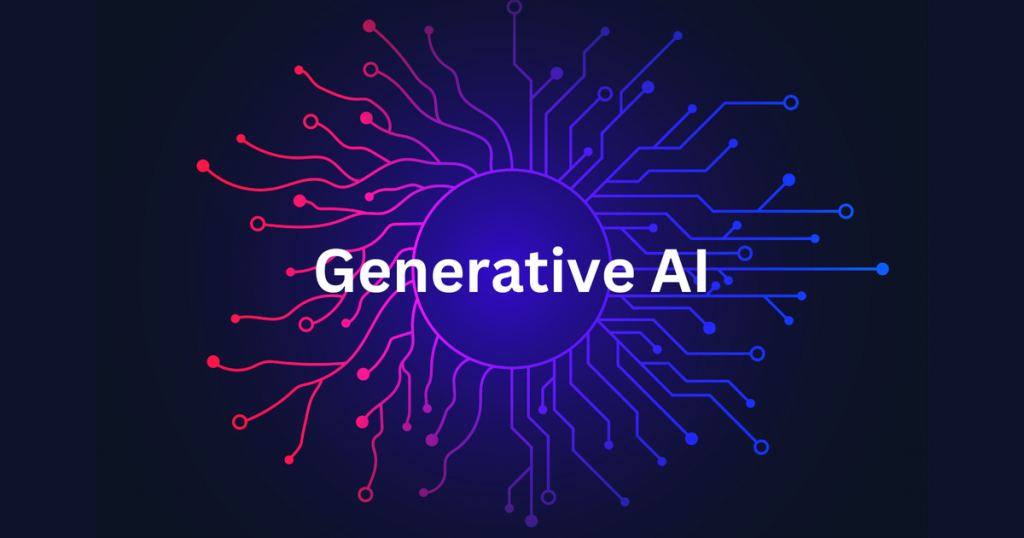
Natural Language Processing (NLP)
NLP enhances chatbot interactions by enabling personalized conversations. It helps manage data quality by replacing poor-quality inputs with better ones. Applications include content creation, language translation, and creative arts.
NLP improves interactions with digital interfaces and automates communication.
Text generation uses NLP to create articles, stories, or any text-based content. Virtual assistants like Siri use NLP for speech recognition and automated replies. Language modeling helps understand context in conversations, making exchanges smoother for users.
Generative AI Model Development
The Development of Generative AI Models: These models use complex math to learn from data, creating new content based on patterns they find.
Training techniques
- Supervised Learning: Uses labeled data for accurate learning from examples.
- Unsupervised Learning: Discovers patterns from large sets of unlabeled data.
- Reinforcement Learning: Improves behavior through trial and error with rewards.
- Transfer Learning: Speeds up training by applying knowledge from similar tasks.
- Adversarial Training: Reduces biases in data for fairer outcomes.
- Fine-tuning: Adjusts pre-trained models with specific data for enhanced performance.
- Human Feedback: Improves the reliability of AI outputs through user input.
- GANs: Leverages neural networks for realistic image or text generation.
- Batch Normalization: Stabilizes training and speeds up learning.
Data Requirements:
- Large Datasets: Needed to teach AI patterns and improve generalization.
- High-Quality Data: Ensures accurate, unbiased results.
- Diverse Data: Prevents overspecialization and improves performance across tasks.
- Synthetic Data: Fills gaps in real-world data without privacy issues.
- Real-Time Data Updates: Keeps models relevant to current trends.
Evaluation Metrics:
Effective metrics ensure models generate realistic and high-quality outputs, essential for refining their performance in industries like marketing and healthcare.
Is Generative AI Just for Tech Experts?
Generative AI is now a tool for everyone, not just developers, making it easier than ever for non-technical users to harness its capabilities for creativity, automation, and innovation.
User-Friendly AI Tools for Non-Techies
Generative AI is not just for tech experts anymore. Platforms like ChatGPT, Jasper AI, and DALL-E are designed with intuitive interfaces, making them accessible even for people without coding experience. All you need to do is input a simple text prompt, and the AI generates text, images, or even video content.
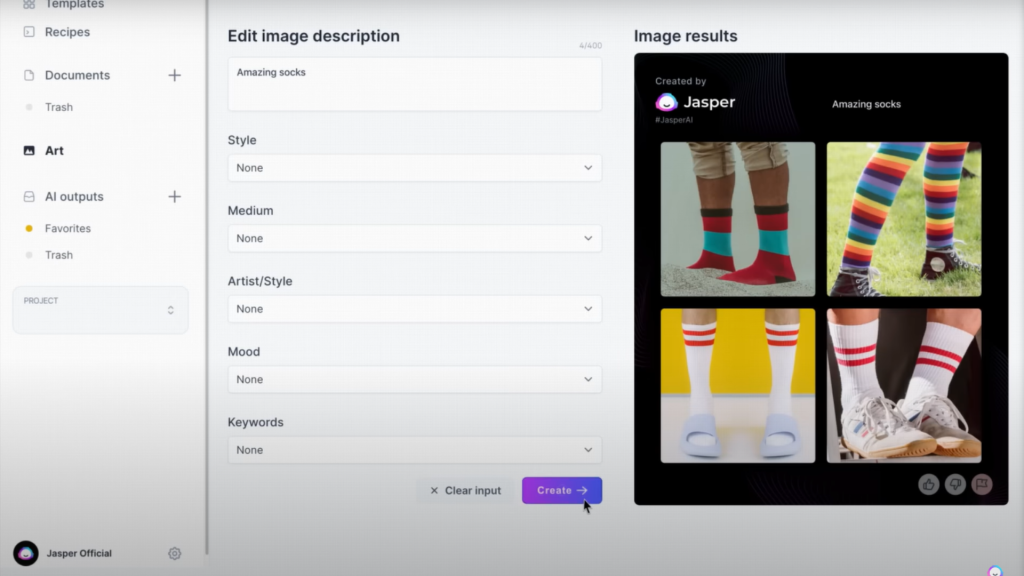
(Image Source: Jasper AI)
Whether you’re a content creator, marketer, or entrepreneur, these tools let you generate high-quality, creative outputs without needing any technical expertise.
Low-Code/No-Code Platforms for Everyone

( Image Source: Zapier)
AI platforms like Zapier, Airtable, and Bubble take it a step further by offering low-code/no-code solutions. These platforms allow users to integrate generative AI into workflows, automate tasks, or create custom applications, all with drag-and-drop interfaces or simple instructions. Marketers can automate email campaigns, creators can build unique visual content, and businesses can enhance customer engagement—all without writing a single line of code.
Benefits of Generative AI
Generative AI can save time and reduce manual work. It also helps create new ideas and solutions quickly.
Efficiency and Automation
Generative AI tools can speed up research cycles. They help with tasks from starting ideas to sharing finished work. This technology makes data analysis and creating content easier for everyone.
AI boosts productivity by aiding product development and drafting technical materials. Companies see faster results, leading to better employee output. The automation aspect cuts down on repetitive tasks and saves valuable time.
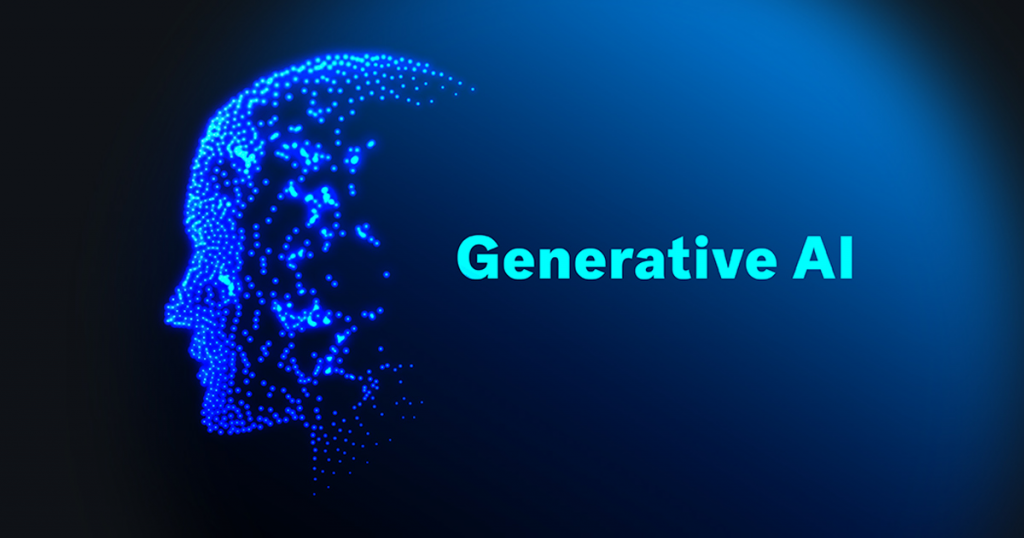
Enhancing Creativity
Generative AI boosts creativity by giving writers new ideas and inspiration for writing. Studies show stories made with AI are more creative and well-written. Writers using Generative AI tools see big improvements in story quality.
These tools help make content more enjoyable to read. They offer unique prompts, themes, and even full sentences that spark the imagination. This makes it easier for writers to overcome blockages and create captivating tales.
Personalization in Marketing and Entertainment
Enhancing creativity often leads to better customer experiences. Generative AI plays a big role here by creating varied content fast and at scale. It helps customize marketing efforts to fit each customer’s needs, leading to more effective campaigns.
Executives recognize the value of generative AI for personalization. They use generative AI for personalized marketing, making promotions feel unique to each individual.
This boosts customer satisfaction and drives engagement and loyalty across various entertainment platforms.
Challenges and Limitations of Generative AI
Generative AI can sometimes make biased decisions based on the data it learns from. It also faces challenges in ensuring user privacy and security.
Privacy and Security Issues
Generative AI has significant privacy and security challenges in healthcare. It can identify individuals from deidentified data, risking patient information.
Strong cybersecurity measures must be in place to prevent privacy breaches.
Data quality is crucial for the safe use of generative AI. Poor data can lead to vulnerabilities and ethical concerns, increasing security risks. Regulatory compliance ensures personal data protection but requires constant updates with new threats emerging regularly.
Dependence on Data Quality
Generative AI relies heavily on the quality of its training data. Flawed datasets can lead to misinformation propagation, as AI tools may fabricate fictional content and inaccurate citations.
Mislabeled images can cause inaccuracies in AI-created visuals. Poor data quality results in a phenomenon known as “AI drift,” where the accuracy of AI tools declines over time.
Training data must be accurate and up-to-date to maintain high-performance levels. Ensuring proper labeling and vetting processes helps improve reliability. Without good data, generative AI cannot produce trustworthy or useful outcomes.
Future of Generative AI
Generative AI will greatly impact future industries and daily life.
Potential Growth Areas
By 2025, generative AI is expected to discover over 30% of new drugs and materials. This shows its potential in healthcare and material science. AI-as-a-service models are also gaining popularity, making it easier for businesses to access advanced AI capabilities without huge investments.
Significant advancements and user-friendly interfaces emerging in 2023 will further boost the adoption of generative AI across industries. Enhanced versatility allows the processing of multiple formats, which opens up more opportunities for innovation in various sectors like marketing, entertainment, and automated decision-making processes.
Emerging Technologies
The potential for growth in Generative AI is significant. New and evolving technologies drive this progress in several ways.
| Emerging Technology | Description | Use For |
|---|---|---|
| Generative Adversarial Networks (GANs) | GANs consist of two neural networks that compete to generate realistic content, like images, videos, and audio. | Used for creating synthetic media in entertainment, marketing, and content generation. |
| Diffusion Models | These models help in creating detailed images by adding and reversing noise in data. | Useful in digital design, art, fashion, and creative industries requiring unique, intricate visuals. |
| OpenAI’s GPT-4 | A powerful language model trained on vast datasets that excel in generating human-like text for multiple applications. | Used in content creation, automated writing, customer service, and creative writing. |
| Neural Network Advancements | Improved architectures that enhance AI’s ability to understand and replicate human creativity across multiple formats, including text, images, and audio. | Applicable in creative industries, entertainment, and marketing for generating complex and nuanced content. |
| Voice Synthesis Technologies | Technologies that create natural-sounding voice outputs, mimicking human speech effectively. | Used in virtual assistants, gaming, personalized audio experiences, and customer service solutions. |
| AI Act (EU) | Regulations like the AI Act ensure that AI technologies are developed and implemented with ethical considerations and responsible innovation. | Critical for compliance, transparency, accountability, and ensuring the ethical use of AI technologies in various sectors. |
| Automated Text Creation Tools | Tools that use NLP to generate coherent and contextually accurate text content for various purposes. | Employed in article writing, customer service automation, marketing content creation, and more. |
| Advanced Image Synthesis Software | These tools generate high-quality images from simple text descriptions or sketches. | Beneficial for digital art, content creation, marketing, and product design. |
| Personalization Algorithms | AI-based algorithms that offer more tailored marketing strategies by generating unique content based on user preferences. | Used in personalized marketing, product recommendations, and customer experience enhancements. |
| Integration with VR/AR | The merging of Generative AI with VR and AR to create more immersive, interactive experiences. | Applied in gaming, remote work, education, and entertainment industries to enhance user interaction and immersion. |
Impact on Society and Industry
New technologies will reshape industries. Generative AI can enhance productivity, leading to job opportunities and automation. It risks increasing socioeconomic inequality, as benefits might not be equally shared across groups.
Generative AI creates personalized learning experiences but may widen the digital divide. Policies in places like the EU, US, and UK need updates to handle AI challenges effectively.
Industries must address ethical concerns while adopting these innovations responsibly.
Generative AI and Ethics: What You Should Know
As AI becomes more powerful and accessible, ethical concerns are gaining traction. One of the main discussions revolves around AI-generated content and plagiarism.
Since AI models like GPT-4 and DALL·E generate text and images by learning from large datasets, it is important to ensure that these systems do not accidentally reproduce copyrighted or sensitive material. This raises questions about intellectual property and authorship: Who owns the content that AI generates?
There is also the issue of AI bias. Many models are trained on large datasets from the internet, which can carry inherent biases that reflect societal prejudices.
To ensure responsible use of AI, developers must address these biases during training and continuously monitor AI output to ensure fairness.
Regulatory frameworks such as the EU AI Act are promoting stricter standards for the development and deployment of AI technology.
How to Get Started with Generative AI Today
Ready to Join in Generative AI World? Here’s a simple guide to get you started:
- Identify Your Use Case: Whether you’re in marketing, content creation, or tech, there’s a generative AI tool that suits your needs. Determine if you’re looking to generate text (like blog posts or social media content), images, or even code.
- Choose a Platform: Several popular platforms cater to different industries:
- For text generation: OpenAI’s ChatGPT and Jasper AI are great for content creation.
- For image generation: Tools like DALL·E 2 and Midjourney allow users to create stunning visuals with simple prompts.
- For code assistance: GitHub Copilot is an AI tool that helps developers write and optimize code.
- Experiment with Free Versions: Many of these tools offer freemium models, allowing beginners to experiment without making a huge financial commitment.
- Learn the Basics of Prompts: Generative AI relies on inputs, so learning how to craft effective prompts is essential. Start simple and iterate based on your needs.
- Stay Informed: As with any cutting-edge technology, it’s important to stay updated on the latest trends and ethical considerations. Follow industry leaders and explore online AI communities for insights.
FAQs About Generative AI
Generative AI often confuses people, leading to many questions. This section addresses common concerns and offers advice for understanding this complex technology.
Common Misconceptions
Many people think Generative AI aims to copy human skills. It works best when it helps human experts. Some believe Generative AI can fully automate tasks, but that’s not true.
Large language models can’t check facts. People often mix up Generative AI with regular AI, machine learning, and large language models. These are different tools with unique uses.
Advice for Businesses
Businesses should use Generative AI tools to automate repetitive tasks. This can save time and improve efficiency. Skilled professionals in AI are expected to earn higher salaries, so investing in staff training is essential.
Ensure compliance with legal policies by conducting risk assessments. Using these tools responsibly helps avoid bias in business applications. Protect privacy and data security at all times.
Resources for Further Learning
The Center for Teaching Excellence offers helpful materials on using Generative AI (Gen-AI) correctly. Faculty can guide students by specifying the allowed and prohibited uses of Gen-AI in course syllabi.
Open discussions about Gen-AI help students understand its implications.
The Modern Language Association (MLA) guidelines require proper citation of Gen-AI tools. Following these rules ensures academic integrity and prevents plagiarism. The detailed resources from MLA aid students in citing sources accurately, and respecting copyright guidelines.
Conclusion
Generative AI is reshaping the way we create and interact with content, offering a revolutionary approach to generating text, images, and more.
However, it also comes with challenges such as bias and ethical concerns that need to be carefully addressed. As generative AI continues to evolve, its role in transforming industries and everyday life will only increase, providing innovative solutions to real-world problems.
Frequently Asked Questions
What is Generative AI and how does it work?
Generative AI uses complex algorithms and deep learning models like GANs (Generative Adversarial Networks) to create new content such as text, images, or audio. It learns from vast datasets, identifies patterns, and generates realistic outputs based on this training.
Is Generative AI ethical to use for content creation?
Ethical considerations in Generative AI involve issues of plagiarism, bias, and intellectual property. To ensure responsible AI usage, developers must follow guidelines that reduce bias and avoid reproducing copyrighted material.
What are some popular tools for getting started with Generative AI?
Beginners can explore tools like OpenAI’s ChatGPT for text generation, DALL·E 2 for image creation, and GitHub Copilot for code assistance. Many of these platforms offer free or low-cost entry points for users new to AI.
How can businesses benefit from using Generative AI?
Generative AI helps businesses automate content creation, design, and marketing tasks. It saves time, enhances creativity, and allows for personalization in customer engagement, helping businesses scale efficiently.
How can I ensure that my use of Generative AI is ethical and unbiased?
To promote ethical AI usage, you can employ adversarial debiasing techniques, continuously monitor the AI’s outputs, and incorporate human feedback to mitigate bias and ensure fair, responsible content generation.




